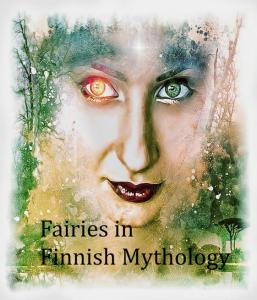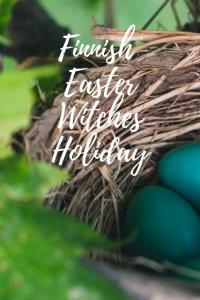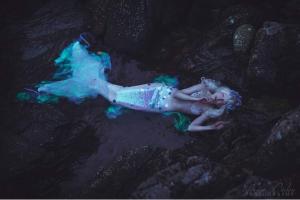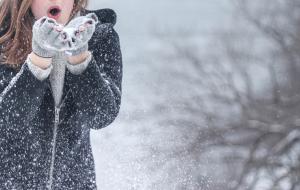Throughout time there have been millions of gods and goddesses that people have worshipped around the world. In Finland, there were several pagan deities who were all manifestations of nature. Beliefs of the first inhabitants of what is now known as Finland were most likely shamanic- animistic beliefs for the totem animals and nature spirits. The pantheon of Finnish deities slowly evolved from these beliefs.
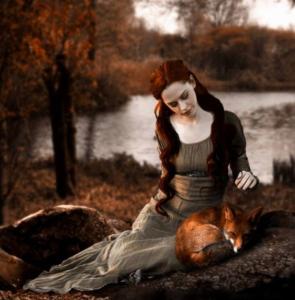
Mielikki
One of the most beloved deities in the Finnish pantheon was Mielikki. Goddess of the forest, bears, luck, abundance, hunting and healing. Mielikki´s name comes from the old Finnish word mielu meaning luck. Mielikki was the wife of the Finnish forest god Tapio. She was also known by the name metsänemä mother of the forest.
In prehistoric times when hunters entered the forest, they asked Mielikki´s permission to enter her kingdom. When a hunter wanted to have a good game, it was recommended that they flattered Mielikki and complimented her good looks. Mielikki was the goddess of hunting. She is often portrayed as an archer with a bow and arrow.
Mielikki was also connected to beauty and elegance. Her job was to make the forest beautiful. She made the flowers grow in the fields. She coloured the leaves in autumn. It was Mielikki who created the beautiful shapes of the trees. Sacred trees and plants to her were juniper and heather. The duality aspects of Mielikki make her both the wild woman/the hunter and also the maternal/healer goddess.
Mielikki and Tapio had several children. Some of the most famous of them were Tuulikki wind spirit (her name means small wind), Nyyrikki god of the hunt and cattle, and forest spirits Tuutikki, Annikki and Tellervo.
Mielikki was the goddess of healing and the protector goddess of wounded animals. She was also known for her herbal skills and she was worshipped by many shamans and witches who practised herbal magic.
Mielikki rarely appeared to humans but when she did she took a form of an old woman dressed up in a mossy hat and grey fur. In the Middle Ages Catholic church turned Mielikki into Virgin Mary in their attempts to convert people to Christianity. Mielikki got a new role as metsämaaria the forest virgin. As metsämaaria Mielikki appeared to people wearing a blue cloak.

Tapio
Tapio was the Finnish god of forest, hunt and gain. It is believed that before Tapio adopted the human form Tapio was the manifestation of the forest. In fact, the old name for Finland is Tapiola.
Finland is known to be a very forestry country. Throughout time forest has offered shelter, building materials and gain to hunt but one could also get lost in the forest and get attacked by predators. This is why ancient people felt both fear and respect for the forest.
Tapio rarely appeared to humans but when he did he usually adopted the form of an old man. Tapio is considered to be a shamanic god. He helps those who wish to learn more about the secrets of the forest and nature. He is a God of wisdom and ancient knowledge. Tapio also represents humans’ love for nature. For he is the forest itself.
When Tapio´s wife Mielikki was called while hunting small animals, Tapio was called to assist when it was time to hunt big wild game such as bears, deer and moose.
It was believed that Tapio and Mielikki lived in a wooden manor in the heart of the forest. Minor nature spirits, forest elves and dryads were their servants. Both Tapio and Mielikki were shapeshifters and could turn themselves into trees and bears.
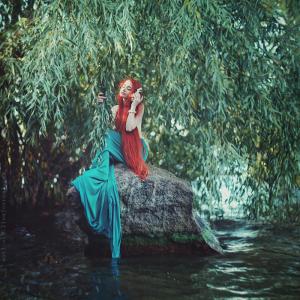
Vellamo
In Finnish mythology, Vellamo is the goddess of water, seas and fishing. She was the protector goddess of fishermen who prayed to her to protect them from storms and dangerous waters. When fishermen were kind to her and respectful she gave them fish. Vellamo could magically turn the course of the wind and create massive waves.
Vellamo´s name comes from the old Finnish word velloa which means the movement of water. She is the wife of the sea god Ahti. It was believed that Vellamo and Ahti lived in an underwater manor called Ahtola. Water spirits were their servants and they also had underwater livestock.
Cows were sacred animals to Vellamo. Legend tells that sometimes during the morning mist she brought her cows to the surface and lead them to the land. They’re one of her cows might get lost and end up with the cow’s cattle owned by humans. It was believed that Vellamo´s cows were very valuable.
Unlike many other sea and ocean goddesses, Vellamo was not depicted with a tail. She was told to be a beautiful, curvy woman who wore a dress completely made of seafoam.
Ahti
Ahti (also known as Ahto) is the god of the water and seas in Finnish mythology. There isn´t much information about Ahti. He was the protector god of fish, islands, sea birds and all marine life. Fishermen prayed to him for good luck.
Ahti is described to be a man who has a moustache and beard completely made of moss. He also does not have a tail but he wears trousers completely made from sea foam. His symbol is the trident.
Ahti was the ruler of all waters. From the biggest lakes to the smallest streams. They were all part of Ahti´s kingdom. He and Vellamo lived in an underwater kingdom called Ahtola. Name Ahti means “in depths”.
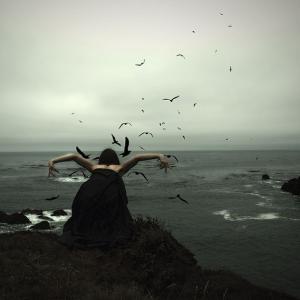
Louhi (also known as Louhitar, Louhetar, Loviatar) was a goddess of witchcraft and shamanism. It is possible that Louhi was the original goddess of the moon in Finnish mythology.
Louhi most likely originates from Saami goddesses that were connected to shamanism and to the powers of the moon. Her name might come from the Finnish expression langeta loveen which is a state where a shaman falls into a trance. Among Finno-Ugric tribes, first ruler deity of the underworld was a male spirit that we don´t have much information left. When culture became more patriarchal there were more suspicious qualities connected to the moon and women. Louhi became the goddess of the underworld.
This also meant a shift in the ways people saw the underworld. In the shamanic world view Alinen the underworld was not like the Christian hell. It was a place where spirits waited their turn to be reborn. When Finnish mythos got more influences from other cultures and later on from Christianity underworld became a place of all misery and torture. Louhi was demonized and became a presentation of the Christian devil. She was turned into an old hag who gave birth to all the evil things in this world: sicknesses, pain and death. In Lönnrot´s epic Kalevala Louhi is portrayed as the evil witch of the north.
Louhi shared her faith with several other witch goddesses around the world. She is the goddess of the seekers, fortune telling and hidden knowledge. Louhi is connected to the moon, winter, and north and her sacred animals are wolves, snakes, lizards and dragons. She represents freedom, independence, magic, intuition and self-trust.
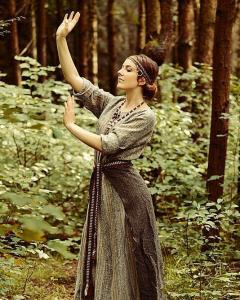
Akka
In Finnish mythology, Akka was the personification of the earth. She was also known as Rauni coming from the Swedish word rönn meaning rowan tree. Rowan trees were Akka´s sacred trees. Akka in modern Finnish means an old woman but in pre-written times Akka was an old Finnish expression for a grandmother. It was also an honorary title given to a woman who had lived to old age.
She was also known as Maanutar, Manutar, Maahetar, Akka mantereenalainen (ancient woman who lives inside the earth) all these names are derived from the Finnish word maa meaning earth. Akka was celebrated on matopäivä (Spring Equinox). Snakes and worms were her sacred animals. It was believed that after the long winter Akka woke up in Matopäivä and all the worms and snakes rose from the ground and danced in her honour.
Akka was wife of Ukko. Finnish god of thunder and fertility. In Finland, there is not a great deal of written information about her. Worship of mother earth dates back 30 000 years.
It is likely that Akka/Rauni and Ukko were brought by the ancient Baltic tribes who arrived in what is now known as Finland approximately 7000 years ago bringing agriculture with them. A new belief system mixed together with the animistic worldview of the Saami created its own unique mythology. Balts also brought a strong female aspect to Finnish mythology.
Akka has many similarities to the Lithuanian goddess of the earth Žemyna. Several myths and chants about Akka were changed in the Middle Ages and she became one of the several variations of the Virgin Mary.
Both Akka and Ukko are connected to the fertility of the land. According to the myth, Akka took the form of a woman who rose from a lake and Ukko the thunder god stroked her with a thunderbolt. That is how earth and sky came one.
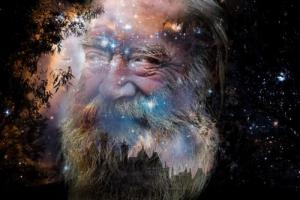
Ukko was the god of thunder, fertility and weather in Finnish mythology and he was one of the most respected gods in the Finnish pantheon. His name literally means an old man in modern Finnish but in pre-Christian times Ukko was an honorary title given to a man who had reached a high age. The Finnish word for thunder ukkonen is also derived from the name Ukko.
Ukko was one of the most important gods because he provided rain which was essential in the agricultural society. Several Finnish scholars of folklore have suggested that Ukko evolved from an even older Finnish deity called Ilma god of the air. This suggestion is supported by the fact that many other Finno-Ugric tribes worshipped a god called Inmar.
Ukko´s origins can be also traced to Baltic myths. Lithuanian thunder god Perkunas, Latvian Perkons and Slavic Perun all share similarities with Ukko. Lithuanian Perkunas was not only the god of air but also the god of justice and so was Saami god Radien who was the god of justice and the community (but not the god of the skies. That was Bieggalmai/Inmar/Tuulimies). It was believed that Ukko created lightning with a hammer, sword or by shooting arrows.
In Finland Ukko´s role was most often connected to fertility. He was a very popular god among young women who performed love spells. Ukko´s assistance was also sought when couples had difficulties having children. Sometimes Ukko was also worshipped as a god of battle and god of hunting. Later when the church rose to power in Finland and in the rest of Scandinavia Ukko´s reputation as the god of fertility and the sky was used to convert people to Christianity by making Ukko equivalent to a Christian god.
When agriculture became more established Ukko was called Ukko Ylijumala (Ukko the highest of the gods). Ukko was celebrated during a festival called Ukon Vakat. Ukon Vakat included good food, drinking, singing and dancing. It was a communal festival that gathered several families and communities together. Often this celebration took place during the Summer Solstice.
Ukko in fact has shamanic origins as well. Before he became a humanized character in ancient Finland people believed that sky and thunder were ruled by the thunder bird Ukkoslintu or Kokkolintu. Ukkoslintu was probably a giant eagle who was worshipped by the hunter-gatherers as one of their most important gods. A similar character/spirit can be found in several different Finno-Ugric tribes and in many native American myths.
Interested in Finnish mythology? Check out my online course Heart of Mielikki






